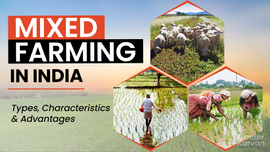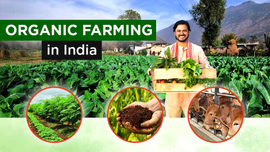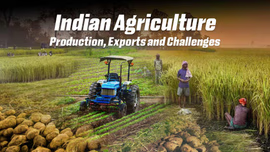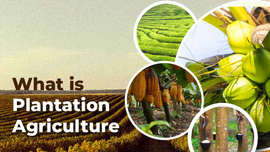Understanding Pollination: Benefits, Modes, Challenges & Best Solutions

Pollination is necessary to produce seeds and fruits by facilitating the reproduction of flowering plants. There are mainly two types of pollination: self-pollination and cross-pollination. Agricultural production of India is highly dependent on pollination due to the presence of a wide range of pollinator-dependent crops. Go through this blog to explore the benefits, types, models, and challenges of pollination in India.
Table of Contents
- What is Pollination in Plants?
- What are the Main Benefits of Pollination?
- What are the Different Types of Pollination?
- What are the Different Modes of Pollination?
- What are the Key Challenges in Pollination in India?
- Key Practices to Enhance Pollination Services
What is Pollination in Plants?
Pollination involves the transfer of pollen grains from the anther of a male flower to its stigma or the stigma of another female flower. It is an important biological process integral to the fertilization in flowering plants to produce seeds and fruits. In India, over 50% of cultivated plants rely on pollinators for producing nuts, seeds, and fruits. For instance, insect pollinators contribute to 40% of vegetable production and 65% of the fruit yields. Pollinators help increase the yields of fruits & vegetables like lucerne, mustard, onion, and apple, and oilseeds like niger/taramira, sunflower, mustard, and rapeseed. Overall, pollination has a crucial role in supporting ecosystems and agriculture to maintain biodiversity and boost food production.
What are the Main Benefits of Pollination?
- Pollination is important for fertilization, leading to the formation of seeds and fruits.
- This process is highly important for ecosystem stability and biodiversity. It helps regulate the balance of ecosystems and supports the entire food web.
- Several nuts, vegetables, and fruits are dependent on pollination for production. It boosts agricultural productivity and ensures food security.
- Due to cross-pollination, new genetic combinations happen that result in genetic diversity in the seed and fruit.
What are the Different Types of Pollination?
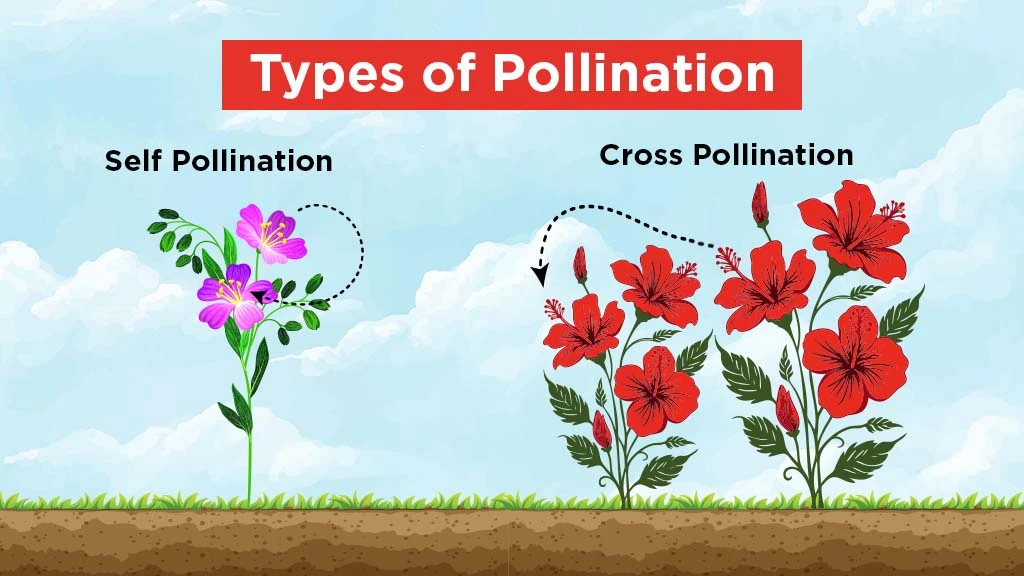
Self-pollination and cross-pollination are the main types of pollination, depending on the pollen source:
Self-Pollination
When pollination happens within a single plant, it is known as self-pollination. It is of two types: Autogamy, which involves the transfer of pollen in the same flower, and Geitonogamy, where pollination happens between two flowers of the same plant. There is minimal to low genetic variation in self-pollination, resulting in less resilient crop varieties. It is common in plants with hermaphrodite flowers, including ladyfinger, chilies, and tomatoes. Self-pollination is useful for areas where there is an absence of pollinators.
Cross-Pollination
Cross-pollination or Allogamy transfers pollen grains from the anther of a plant to the stigma of a different plant. It is usually carried out through pollinators like wind or insects. Main examples of cross-pollinated crops include apples, raspberries, pears, cardamom cucumbers, maize, etc. Cross-pollination promotes genetic diversity for improving adaptability to environmental changes and resistance to diseases. All unisexual flowers are naturally cross-pollinated. In comparison to self-pollination, more pollen grains are wasted in cross-pollination. However, progenies are healthier, and new varieties can be produced.
What are the Different Modes of Pollination?
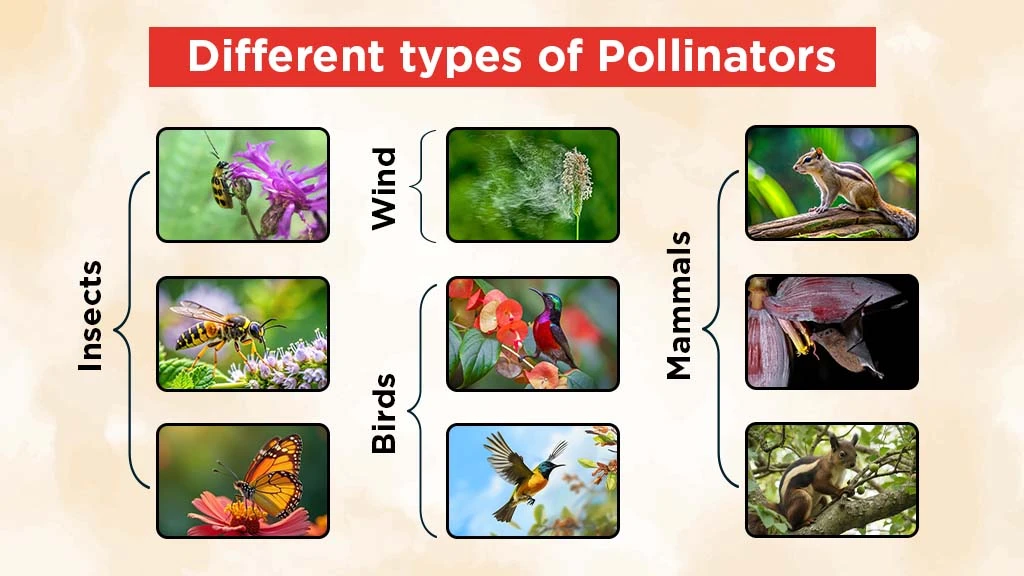
Pollination occurs with the help of a wide range of pollinators or agents, including insects, birds, mammals, and wind.
Insects
The main insects that facilitate pollination include beetles, flies, bees, wasps, butterflies, and moths. Bees are the most important pollinators for global agriculture. Globally, different bee species pollinate around 16% of the 2.5 lakh flowering plants. They pollinate more than 500 plants, including species of guava, banana, and mango. Insect-pollinated crops are known to have key micronutrients like folic acid and vitamins.
Birds
Nectar-consuming birds like sunbirds and honeyeaters are usually involved in pollination. Flowers attract these birds with strong fragrance, nectar availability, and bright colours. Tubular or bell-shaped flowers make it easy for birds to access nectar with their beaks. They feed on flowers while transferring pollen attached to their feathers, heads, and beaks to different flowers. With long, slender beaks, sunbirds easily feed on nectar and pollinate different plant species.
Mammals
Mammals are also crucial for pollination to reproduce different plant species. Rodents, bats, and some primate species are major pollinators in India. Primate and bat pollinators have a low reproductive rate, which makes them highly vulnerable. Bats are highly popular pollinators for flowers that bloom at night. In the Western Ghats, the jungle palm squirrel (Funambulus tristriatus) and Indian giant squirrel (Ratufa indica) are common mammal pollinator species.
Wind
Wind pollination or anemophily occurs when pollen grains are transported by wind to another plant. There are many crop plants that are wind-pollinated, like oats, barley, rye, corn, rice, and wheat. Examples of wind-pollinated trees that are economically important include hardwood trees, firs, spruces, and pines. Wind-pollinated flowers usually do not have elements like nectar, scent, or attractive flowers to attract pollinating agents. Rather, they have small, plain flowers with high quantities of light and dry pollen that can be transported by wind.
What are the Key Challenges in Pollination in India?
Several issues hinder pollination to threaten biodiversity and agricultural productivity, including habitat loss, chemical pesticides, climate change, diseases, and non-native species.
- Habitat loss: The animal and plant habitats are being degraded by man-made activities to meet the requirements of an increasing population. Wetlands, forests, water reservoirs, and grasslands are being turned into parks, factories, and housing colonies. There is an adverse impact of such land use change on the native habitats of pollinators, which puts their survival, nesting, and foraging behaviours at risk.
- Chemical Pesticides: Modern agriculture has increased the use of chemical pesticides to boost yields. These pesticides can kill pollinator insects, for example, bumblebees have less chances of survival and reproduction due to the use of neonicotinoid pesticides. Some of the major effects of chemical pesticides on pollinators include reduced immunity, behavioural changes, and insecticide-resistance development.
- Climate Change: Climate change is not good for insect pollinators, such as butterflies, bees, wasps, and moths. It is mainly because of the variation in environmental factors like photoperiod, wind speed, humidity, rainfall, and temperature. In Ranchi, anthropogenic activities impacted the climatic conditions, which in turn reduced the biodiversity of butterflies.
- Diseases: If diseases become dominant, pollinators cannot survive. There is a wide variety of diseases that target pollinators to disrupt their lifecycle. For example, nosema is a fungal disease common in bees and honeybees that causes diarrhoea and weight loss. Other common diseases for honeybees include varroa mite infestation (VMI), wax moth infestation, deformed wing virus (DEV), and sacbrood virus (SBV).
- Non-Native Species: Non-native pollinator species are usually introduced for higher yields. However, they can harm the ecosystem as they are in competition with native pollinators for food, reproduction, and habitat. Also, they come with a new set of parasites and diseases. For example, the Red Imported Fire Ant (Solenopsis) is an invasive species in India that can damage butterflies and bees.
Key Practices to Enhance Pollination Services
Some of the key practices for improving pollination services and addressing its challenges are habitat conservation, sustainable agriculture, Integrated Pest Management, and awareness & training.
- Habitat Conservation: The protection, restoration, and conservation of habitat is important for securing pollinators. Botanical gardens, biodiversity parks, nectar-rich shrubs, and trees can be established to safeguard the ecosystem. Organic farming needs to be promoted to reduce the use of insecticides and other chemical inputs. Another key initiative is to restore grasslands, wetlands, and natural forests.
- Sustainable Agriculture: Sustainable agriculture can reduce damage to pollinators while ensuring sustainable food production. It promotes biodiversity that is valuable for agricultural production with the help of practices like crop diversification, crop rotation, intercropping, and less chemical use.
- Integrated Pest Management (IPM): Dependence on harmful pesticides can be reduced by integrated pest management. It involves a range of activities, including targeting applications and the use of biological controls. Due to IPM, the mortality rate of pollinators is minimized, but the crop health is maintained.
- Awareness & Training: There is a lack of education about pollination services in India. Youth and farmers have to be made aware of the importance of pollinators. Government projects, seminars, and workshops can be held to educate farmers about higher crop yields and quality due to pollination.
Pollination is integral for sustaining the agriculture and biodiversity of India. Even though pollination services face several challenges, including habitat loss, climate change, and chemical pesticides. Key practices like habitat conservation, sustainable agriculture, and IPM are effective solutions for improving pollination services across India. There is a need for collaboration between policymakers, scientists, and farmers to establish policies and initiatives to safeguard pollinators.
Frequently Asked Questions On Understanding Pollination: Benefits, Modes, Challenges & Best Solutions
1. What is a geitonogamy pollination?
Geitonogamy pollination is a type of self-pollination in which pollen from a flower fertilizes another flower of the same plant.
2. What are the two main types of pollination?
The main types of pollination are self-pollination and cross-pollination.
3. Which type of pollination is best?
Both pollination types have their own benefits; however, cross-pollination offers greater genetic diversity that results in offspring that are more resistant to diseases and environmental changes.
4. What is the difference between pollination and fertilization?
Pollination involves the pollen transfer from the male anther to the female stigma of the flower to prepare it for fertilization. Fertilization involves the fusion of male and female gametes, forming a diploid zygote. Also, fertilization occurs only after successful pollination.


Related Blogs
